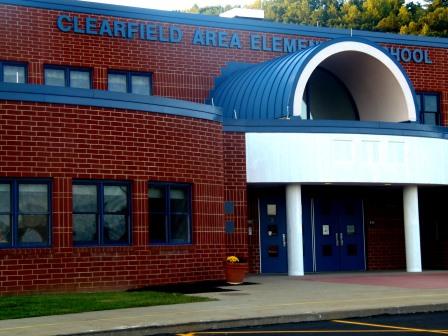While people debate whether it is safe to send students back to school during the COVID-19 crisis, local teachers have been busy getting things ready for a new type of school year.
One of those teachers is Mason Strouse who teaches first grade at the Clearfield Elementary School.
The Clearfield Area School District whose students start back to school on Wednesday, has chosen to split the children into two groups based on their last name.
These groups will attend classes every other day, to limit the amount of kids in the school at a time.
Getting his room ready has been “tricky” because there are constant changes to requirements, Strouse said.
“There were changes just from the beginning of the day today,” he explained.
One of the first steps was to move all unnecessary items from the room to allow for the desks to be spaced out.
It looks very clean, very organized, he commented.
Of his two groups, one has only five kids with the other having 17.
Teaching the children how to log on to computers is one of their first tasks, in case the school later needs to shut down, he explained.
There is a special program that makes it easier for elementary students and for some parents too. When they log on, they will see the reading and math programs “right there for them.”
Students are required to work at home on their days off.
During the spring shut down, the district discovered about one third of their students don’t have Internet access. “We are a large district with very rural areas.”
Even some teachers had problems with connectivity in their Zoom meetings, he added.
He has about the same number of students he had last year with only one student opting to stay at home using the cyber school option.
Feeling exited “in a nervous kind of way,” Strouse is looking forward to school starting.
Some of the veteran teachers have commented to him that it is so different, that they feel as if they are starting school for the first time.
There are seven first grade teachers that form a great team that “can learn off each other,” he said.
Will first graders really keep their masks on?
“We have been encouraging parents to practice” having the kids wear masks and at the school meetings they all were cooperating, he said.
Strouse is optimistic that masks will become as normal as the other parts of the dress code.
His students will stay at their desks most of the day including instruction for art, music and gym classes in the same room.
Both the cafeteria and gymnasium will be utilized for lunch to allow students to eat without being close to each other.
The Curwensville Area School District which is opening Thursday, is having all students attend every day.
James Fleming, who teaches at the Curwensville Junior Senior High School, said he is happy with how the administration has prepared saying the custodial staff “worked their tail off to prepare for this year.”
“A huge amount of credit goes to the people not in front of students to get us back in front of students,” he said.
Because they are a small district, they have adequate room to keep students apart but he still had to limit some of the items in his room to allow the desks to meet the six feet distance requirements.
To ensure proper distancing in the halls, the school is having two separate three minutes breaks for changing classes, which should keep the numbers of students in the hall down.
Lunch periods are being staggered with both the gym and cafeteria being used as a lunch room.
Between classes Fleming has to wipe the tables down.
Is he concerned teenagers won’t want to cooperate and wear masks?
The students at Curwensville Schools “are full of school spirit” and follow rules. “I do not see a large-scale disrespect of our teachers.”
He mentioned the district is “almost a family” with all aspects of the school and community being very supportive of the teachers.
He is a bit concerned about the limit of social interaction in the classroom.
Instead of walking around the room, reading over the students’ shoulders to review their work and interact with them, he has to keep his distance, he explained.
“Kids need socialization with other students and teachers. Hopefully we are dynamic enough that it is not going to make a difference.”
School was taken away abruptly from students in the spring and it had an impact on them. “People realize how important it is to have kids in school.”
Going to online teaching in March was a bit of a problem due to only 70 percent of students having access to the Internet.
He noted he has been using Google Classrooms for five years now so when the school shut down, he was already prepared for online instruction.
The Curwensville district also had problems with a lack of Internet access in some places.
Now they have set up some hot spots in the community to give kids a chance to download their work to take home, Fleming explained.
Part of the early lesson plans include showing students how to access the system to download information this so if the school does close again, they will know what to do.
Of course, everyone is hoping this doesn’t happen. “We could weather a couple of the kids getting it” without it spreading enough to close the school, he said.
But it would be more of a problem if teachers get sick because it is a challenge to find substitutes.
Overall, Fleming is confident Curwensville Schools are going to be able to complete their school year.
“If anybody is going to make it through the whole year, it is us.”
